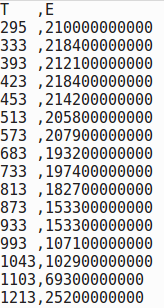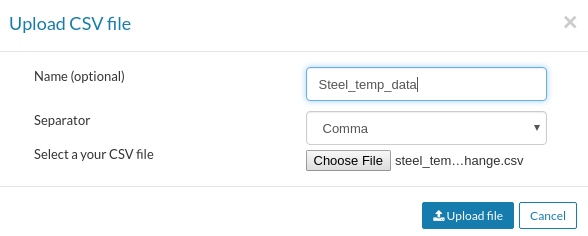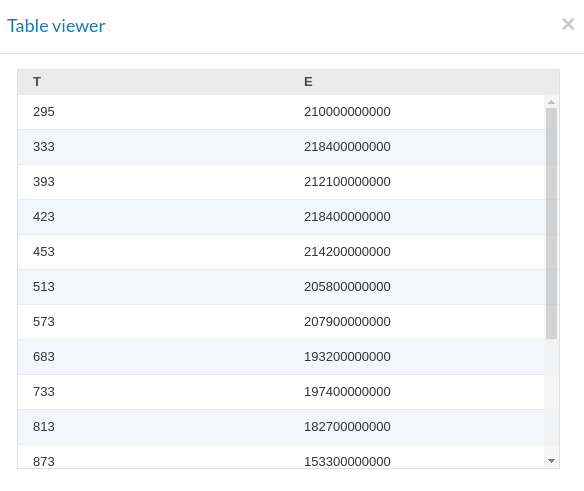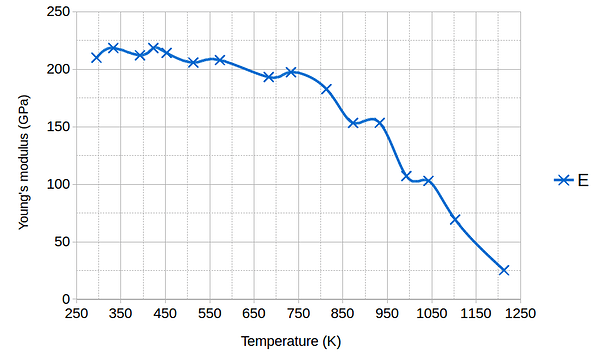Defining a temperature dependent material is fairly simple in SimScale thanks to table upload. You can define such type of material by just uploading a .csv file containing the temperature values in first column and dependent material parameter in second column distributed by a delimiter (compatible: comma, semicolon, tab, space). A step by step guide below shows how to do that considering a material whose Young’s modulus (E) is dependent on temperature:
-
Using your material data, make a a .csv file. The graph below shows an example of temperature change of Steel Young’s modulus.
Using this material data one can create a comma delimited .csv file which will look like in any text editor as:

-
Upload the table to a nonlinear uncoupled thermomechanical analysis (Uncoupled thermomechanical analysis - advanced in current case) creating a new material, clicking table upload button (
 ) and than click upload file (
) and than click upload file ( ). A Upload CSV file window will pop up as shown in the figure below. Click Choose file and select your material file. Give it a name (optional). Next click Upload file.
). A Upload CSV file window will pop up as shown in the figure below. Click Choose file and select your material file. Give it a name (optional). Next click Upload file.
-
Click
 button to see the uploaded data whose column should look well separated as shown in the figure below (if both column values are not separated than it means that the selected Separator (delimiter) wasn’t right at the time of upload e.g. using Semicolon as separator for file having column separated with Comma).
button to see the uploaded data whose column should look well separated as shown in the figure below (if both column values are not separated than it means that the selected Separator (delimiter) wasn’t right at the time of upload e.g. using Semicolon as separator for file having column separated with Comma).
-
Once the file is uploaded, you will return to material panel with the uploaded file as shown in the figure below.
-
Highlighted in red are the columns for temperature and material values. This is set to 1 and 2 respectively since our file contain temperature and Young’s modulus values in first and second column respectively.
-
Highlighted in green is the Interpolation criteria which is set to linear means the data will be interpolated linearly. One can also choose logarithmic or none if required.
-
Highlighted in blue is the Left-sided Extrapolation criteria which is set to constant. In current case it would mean that any value of Young’s modulus for temperature values below 295 K will be taken same as the first value i.e. 210 GPa.
-
Highlighted in orange is the Right-sided Extrapolation criteria which is set to linear. In current case it would mean that any value of Young’s modulus for temperature values above 1213 K will be decreased linearly based on last two values.
That’s it! your material Young’s modulus changing with temperature is now defined. You can perform the same procedure if you want to define your material’s Poisson’s ratio,Expansion coefficient, Conductivity (Kappa) or Specific heat dependency on temperature.
Example project can be seen here.

